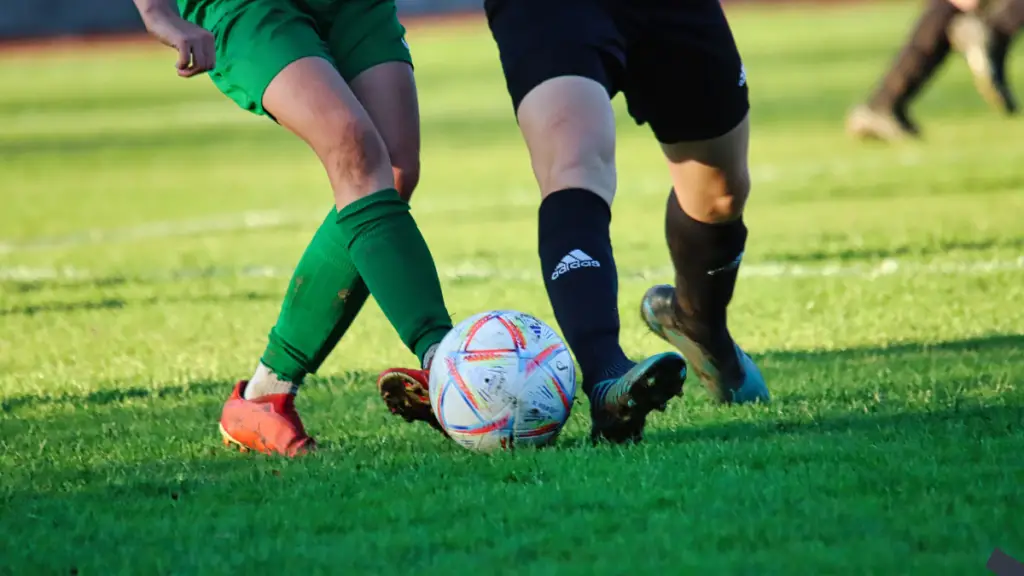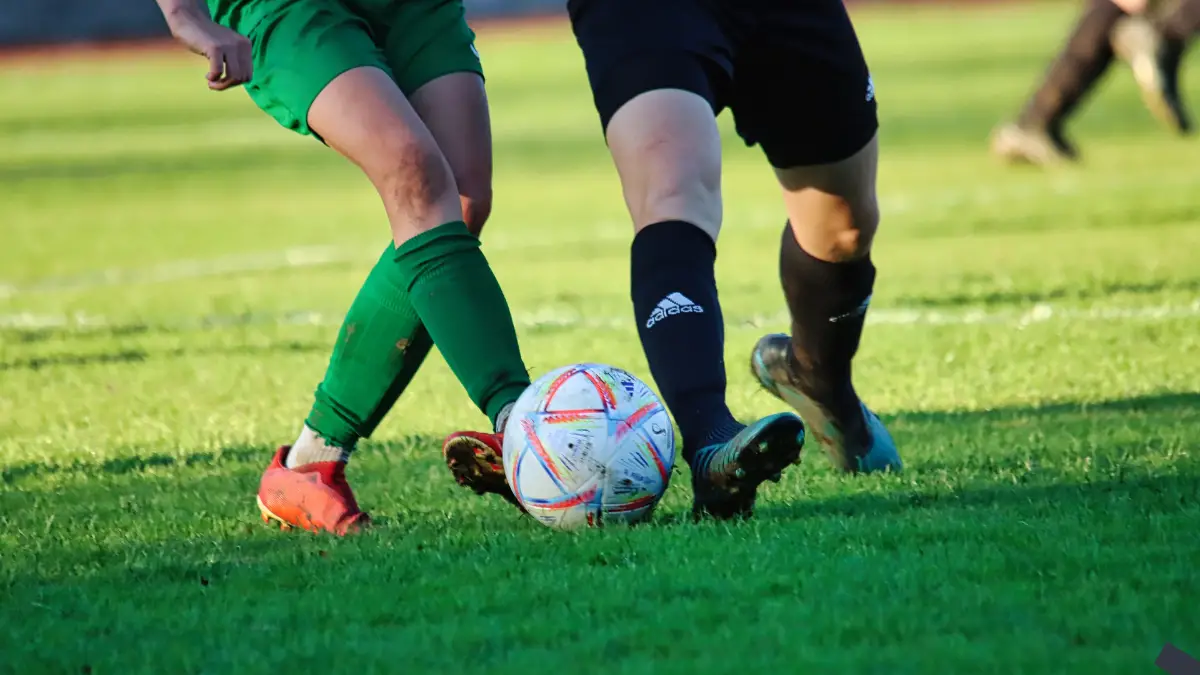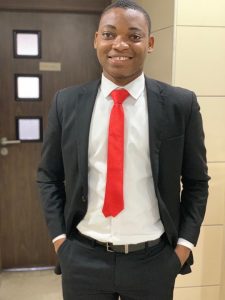The Super Eagles, Nigeria’s national football team, consistently garners national pride and international acclaim. However, a recurring concern has been the underrepresentation of players from Northern Nigeria. In the succeeding paragraphs, we will address the issue of football in northern Nigeria.
Despite being the country’s most populous region, it is rare to see more than one or two players from the North in the national squad.
This disparity raises concerns among northerners, who argue that it contravenes the principles of federal character enshrined in Nigeria’s laws.
To understand this issue, we must delve into the sociocultural factors at play and explore strategies to enhance northern representation in Nigerian football.
Sociocultural Factors Contributing to the Underrepresentation of Football in Northern Nigeria
1. Socioeconomic Factors:
Northern Nigeria grapples with higher poverty rates compared to the southern regions. According to the National Bureau of Statistics (NBS) 2019 report, the North-West and North-East regions have the highest poverty rates in Nigeria. The North-West has a poverty rate of around 77%, while the North-East has a poverty rate of about 71%. In contrast, the South-West region has a poverty rate of around 12%.
This economic disparity impacts the availability and quality of sports infrastructure, limiting opportunities for young talents to hone their skills.
While it is common to find many of the millions of out-of-school children in the North engaging in playing football. They often do so in their state of physical impoverishment. They can neither afford to buy decent football boots nor jerseys. They play in their dirty and overworn Kaftans.
At this point, one may cite examples of other football players who have made it to the big stage despite coming from poverty. Yes, even Cristiano Ronaldo came from poverty and struggled during his childhood. But he had a supportive mother who believed in sports.
Unfortunately, in the north, there is no abundance of examples of mothers like that of Cristiano Ronaldo. Instead, many northern families prioritize education and traditional occupations over sports, which reduces the number of children actively participating in football from a young age.
2. Cultural and Religious Influences:
Cultural attitudes in some northern communities view sports, particularly football, as less important than academic or vocational pursuits.
Families often prioritize academic success and career paths in fields such as law, medicine, and engineering over sports. This can lead to less encouragement for children to pursue football seriously.
Those who succeed in sports and make it to Europe are often seen as bizarre and not fit for the social settings in the North. This is also because the reputation of footballers as being undisciplined womanizers has taken deep roots in the minds of many Northern families.
It is the same reason why you’ll hardly find many northerners joining the Japa bandwagon. When northern people travel abroad for studies, there are higher chances they will return home before their counterparts from the south.
Furthermore, with a significant Muslim population, religious practices and obligations influence the time and energy children can dedicate to sports, especially during certain times or events.
During the hours of 4-6 pm when most public schools are filled with football players, many other children are in their Islamic school taking lessons. Any child who abandons his Islamic studies to pursue a football career is seen as a wayward outcast.
Therefore, it is often only on Thursdays and Fridays that adolescent children can have time to play football during the evening. Then again, Friday being a holy day, not many people are enthusiastic about playing football at that time when the hours between 4-6 pm are Islamically reported to be the most sacred hours of the week.

3. Exposure and Access:
The northern regions often have less exposure to professional football scouts and fewer organized competitions. Making it challenging for local talents to gain national attention.
The South has a higher concentration of established football academies that attract scouts from local and international clubs. For example, the Lagos-based Pepsi Football Academy has produced notable players like Mikel John Obi and Elderson Echiejile. These academies regularly organize tournaments and training camps, drawing scouts to their events
Key youth tournaments and competitions, such as the Lagos State FA Cup and the Shell Cup, are predominantly held in the South. These events are prime opportunities for scouts to identify and recruit young talent. The annual Copa Coca-Cola tournament, often held in southern cities, also attracts significant attention from scouts.
Southern cities like Lagos and Port Harcourt frequently host international friendly matches and training camps, offering local players exposure to scouts from foreign clubs. This international exposure is less common in the North, limiting opportunities for northern players to be noticed.
The media infrastructure in the South is more developed, with numerous sports channels, newspapers, and online platforms covering local football extensively. This media coverage helps to spotlight emerging talents and attract scouts. In contrast, football activities in the North receive less media attention.
Many northern areas’ vast and sometimes remote nature further hinders access to national-level sports programs and competitions.
4. Government and Institutional Support:
There may be less governmental and institutional support for sports development in the north compared to the south.
Northern states typically allocate a smaller portion of their budgets to sports compared to their southern counterparts. This is often due to competing priorities such as education, healthcare, infrastructure, and security.
There is considerable variation in sports budget allocations among northern states. Wealthier states like Kano and Kaduna may allocate more funds to sports compared to less economically developed states like Yobe and Kebbi.
Kano, being one of the more economically vibrant northern states, often allocates relatively more funds to sports. For instance, the state government has invested in the renovation of Sani Abacha Stadium and supports local football clubs like Kano Pillars FC. However, even these investments may still lag behind the sports budget allocations seen in southern states.
Southern states like Lagos, Rivers, and Akwa Ibom generally allocate more substantial portions of their budgets to sports.
This includes investments in state-of-the-art facilities, grassroots development programs, and hosting major sports events.
For example, Akwa Ibom’s investment in the Godswill Akpabio International Stadium is a notable contrast to the sports infrastructure in many northern states.
This limited financial support by the North affects the ability to build and maintain sports facilities, run football academies, and organize local competitions.
Pathways to Improving Northern Representation
To address these challenges and improve northern Nigeria’s representation in the Super Eagles, strategic measures must be taken:
1. Infrastructure Development:
Investing in building and improving sports facilities and football academies in the northern region is crucial.
Creating environments where young talents can train and develop will provide the necessary foundation for their growth.
2. Grassroots Programs:
Implementing grassroots football programs targeting schools and communities is essential. Regular tournaments and competitions should be established to scout and nurture young talents from an early age.
3. Education and Awareness:
Conducting awareness campaigns to educate communities about the benefits of sports, including football, is vital. Highlighting the success stories of northern players can inspire and motivate young talents and their families.
4. Talent Scouting and Support:
Increasing the presence of football scouts in the north and establishing partnerships with local clubs and schools to identify and support promising players is necessary.
Providing scholarships and sponsorships for talented players to attend football academies and training camps will also be beneficial.
5. Government and Policy Support:
Advocating for policies that promote equitable investment in sports across all regions and ensuring that government funding and resources are allocated to support football development in the north is crucial. Enforcing the principles of federal character in sports selections will ensure fair representation from all regions based on merit.
6. Engagement with Stakeholders:
Engaging religious and community leaders to garner support for football programs is vital.
Collaborating with influential figures can help change perceptions and gain community buy-in, creating a more supportive environment for young athletes.
Conclusion
Addressing the underrepresentation of northern players in the Super Eagles requires a multifaceted approach that tackles socioeconomic, cultural, and infrastructural challenges.
By investing in infrastructure, implementing grassroots programs, raising awareness, increasing talent scouting, securing government support, and engaging community leaders, Northern Nigeria can enhance its representation in the national football team.
This not only aligns with the principles of federal character but also ensures that the Super Eagles truly reflect the diverse talent and potential of the entire nation.
.






